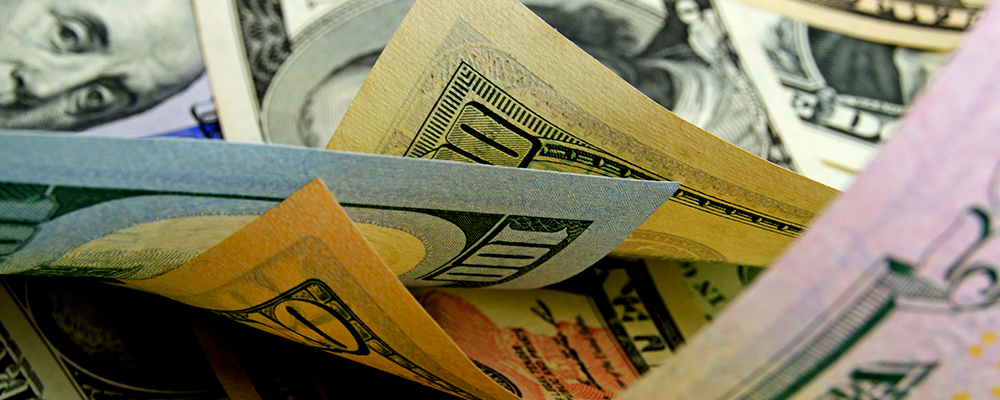After falling last week by 2% to 101.80, the dollar index rebounded on Monday amid no visible bearish catalysts to push lower. The rebound could be also facilitated by the fact that the price has reached the lower bound of the bearish channel:
From a technical point of view, upside USD correction after the significant drop may extend to 102.50, but the main trend remains bearish with a key target at 100 points.
The US market is having a partial Martin Luther King Day holiday today, so market prices will likely remain range-bound. The economic calendar this week is nothing special, with US retail sales, industrial production and existing home sales adding to the picture that the NFP and CPI report for December have formed. However, positive surprises are not expected and moderately negative readings (i.e. surprises on the downside) are unlikely to change the forecast for Fed rate hikes in February and March. Consensus forecast calls for two increases of 25 bp.
The market is now clearly biased to get ahead of itself and price in rate cuts for this year, along with the recovery of economic activity in China, this increases investor interest in EM currencies, where expected returns increase. What seems to be a compelling call in the market right now is that the dollar has reversed, the pressure on EM currencies through rate hikes has declined significantly, and 2023 will mark a trend of inflows to emerging markets, lower rates and upside trends in EM bond markets. Indeed, one of the benchmark bond market indices in the national currency of developing countries has already gained 4.2% this year and trimmed more than two-thirds of last year’s fall. The continued success of this story clearly depends on both the soft Fed story and more positive news from China.
As far as China is concerned, we see that local authorities acknowledge the rise in the death toll following the abandonment of the zero-spread Covid policy last November. It is clear that any new closure will undermine optimism this year. In addition, China’s fourth-quarter GDP is due tomorrow and is expected to contract from the exceptionally low quarter by 1.5% year-on-year.
Also a lot of attention this week will be paid to the meeting of the Bank of Japan (BoJ) on Wednesday. Further adjustments to JGB targets are in the spotlight and investors are bracing for this with higher interest rates on long-term swaps. Japanese 10-year swap rates rose another 5 basis points overnight to their highest level in a decade. USD/JPY may fall to 126.50 before Wednesday on expectations of new hawkish BoJ decisions:
Factors putting pressure on DXY below 102 remain in place and if the decline does resume DXY may find support in the 101.30-101.50 area.
EUR/USD continues to try to settle above 1.09. The focus in Europe this week could be some keynote speakers at the World Economic Forum in Davos, where European Central Bank President Christine Lagarde will speak on Friday. We will also see some data from Germany in the final CPI and ZEW investor outlook survey, which is expected to improve. As above, the EUR/USD rate is likely to depend on the events in Asia this week. However, EURUSD is unlikely to rise above 1.0900-1.0950.
Also this week there will be a meeting of the Norges Bank. A final 25bp rate hike is expected, up to 3.00%. Demand remains on the oil market amid expected growth in demand from China which should continue to offer support to the NOK.
Source: Tickmill



